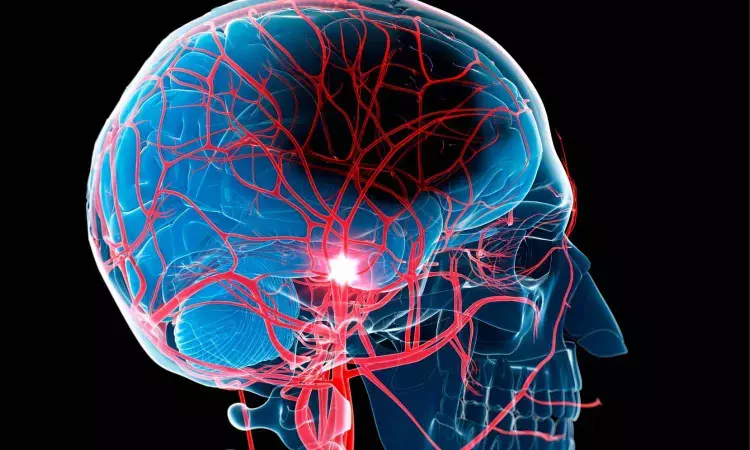- Home
- Medical news & Guidelines
- Anesthesiology
- Cardiology and CTVS
- Critical Care
- Dentistry
- Dermatology
- Diabetes and Endocrinology
- ENT
- Gastroenterology
- Medicine
- Nephrology
- Neurology
- Obstretics-Gynaecology
- Oncology
- Ophthalmology
- Orthopaedics
- Pediatrics-Neonatology
- Psychiatry
- Pulmonology
- Radiology
- Surgery
- Urology
- Laboratory Medicine
- Diet
- Nursing
- Paramedical
- Physiotherapy
- Health news
- Fact Check
- Bone Health Fact Check
- Brain Health Fact Check
- Cancer Related Fact Check
- Child Care Fact Check
- Dental and oral health fact check
- Diabetes and metabolic health fact check
- Diet and Nutrition Fact Check
- Eye and ENT Care Fact Check
- Fitness fact check
- Gut health fact check
- Heart health fact check
- Kidney health fact check
- Medical education fact check
- Men's health fact check
- Respiratory fact check
- Skin and hair care fact check
- Vaccine and Immunization fact check
- Women's health fact check
- AYUSH
- State News
- Andaman and Nicobar Islands
- Andhra Pradesh
- Arunachal Pradesh
- Assam
- Bihar
- Chandigarh
- Chattisgarh
- Dadra and Nagar Haveli
- Daman and Diu
- Delhi
- Goa
- Gujarat
- Haryana
- Himachal Pradesh
- Jammu & Kashmir
- Jharkhand
- Karnataka
- Kerala
- Ladakh
- Lakshadweep
- Madhya Pradesh
- Maharashtra
- Manipur
- Meghalaya
- Mizoram
- Nagaland
- Odisha
- Puducherry
- Punjab
- Rajasthan
- Sikkim
- Tamil Nadu
- Telangana
- Tripura
- Uttar Pradesh
- Uttrakhand
- West Bengal
- Medical Education
- Industry
D-Dimer Levels and NIHSS Scores Predict Poor Outcomes in Elderly Stroke Patients: Study

Researchers have found in a new study that elevated D-dimer levels and higher NIHSS scores were found to strongly predict poor prognosis in elderly patients with cerebral infarction. Patients with worse outcomes had significantly higher D-dimer levels, which correlated positively with NIHSS scores. D-dimer showed 72% sensitivity and 74% specificity. Additional key risk factors included advanced age, atrial fibrillation, and a history of transient ischemic attacks. This study evaluates the relationship between D-dimer levels and NIHSS scores with prognosis in elderly patients with cerebral infarction.
Methods: This study was a retrospective study that included 112 elderly patients with cerebral infarction admitted to our hospital from January 2022 to December 2023. The modified Rankin Scale (mRS) was used to assess the prognosis at six-month follow-up, and patients were divided into two groups: good prognosis (mRS 0– 2) and poor prognosis (mRS 3– 6). Detailed data collection and statistical analysis were conducted, including descriptive statistics of baseline data, correlation analysis between D-dimer and NIHSS scores, and multivariate logistic regression analysis to identify independent risk factors for poor prognosis.
Results: Patients in the poor prognosis group had significantly higher age, BMI, proportions of smoking history, alcohol consumption history, transient ischemic attack (TIA) history, atrial fibrillation history, admission NIHSS scores, and D-dimer levels compared to the good prognosis group (P< 0.05). In addition, there were significant differences in D-dimer levels among patients with mild (NIHSS 1– 4), moderate (NIHSS 5– 14), and severe (NIHSS≥ 15) strokes (P< 0.001), and D-dimer levels were significantly positively correlated with NIHSS scores (r=0.58, P< 0.001). Multivariate logistic regression analysis showed that D-dimer levels, admission NIHSS scores, age, atrial fibrillation, and TIA history were independent predictors of poor prognosis (P< 0.05).
ROC curve analysis showed that the AUC of D-dimer in predicting poor prognosis was 0.76 (95% CI: 0.67– 0.85), with a sensitivity of 72% and specificity of 74%. D-dimer and NIHSS showed a significant positive correlation (r=0.58, P< 0.001), with an AUC of 0.76 for predicting poor prognosis. Independent risk factors included age, atrial fibrillation, and a history of TIA. These findings support the use of D-dimer as a critical biomarker in risk stratification for elderly stroke patients.
Reference:
Zheng Z. D-Dimer Levels and NIHSS as Prognostic Predictors in Elderly Patients with Cerebral Infarction. Clin Interv Aging. 2025;20:505-511 https://doi.org/10.2147/CIA.S502994
Dr. Shravani Dali has completed her BDS from Pravara institute of medical sciences, loni. Following which she extensively worked in the healthcare sector for 2+ years. She has been actively involved in writing blogs in field of health and wellness. Currently she is pursuing her Masters of public health-health administration from Tata institute of social sciences. She can be contacted at editorial@medicaldialogues.in.
Dr Kamal Kant Kohli-MBBS, DTCD- a chest specialist with more than 30 years of practice and a flair for writing clinical articles, Dr Kamal Kant Kohli joined Medical Dialogues as a Chief Editor of Medical News. Besides writing articles, as an editor, he proofreads and verifies all the medical content published on Medical Dialogues including those coming from journals, studies,medical conferences,guidelines etc. Email: drkohli@medicaldialogues.in. Contact no. 011-43720751


